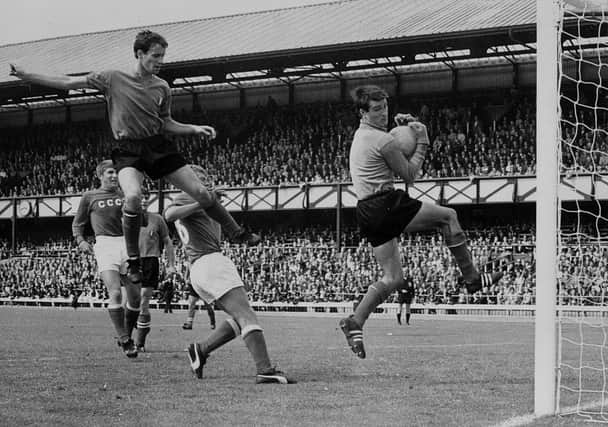Memories of Sunderland and Roker Park's role in the 1966 World Cup


It was a goalless draw I watched on the telly in Thomas Street in Ryhope. I was eight at the time.
A few days earlier I had won a book at the cubs at the end of my street. The book was about the World Cup which was due to be played in England. It got me interested. That first game I remember was the opening match of the 1966 tournament between England and Uruguay.
Advertisement
Hide AdAdvertisement
Hide AdSunderland had no players involved. Stan Anderson was no longer with Sunderland but had been part of England’s squad at the previous World Cup.
In 1966 Northern Ireland had narrowly missed out on qualifying otherwise Martin Harvey would have played.
Captained by Sunderland’s Jim Baxter and with Sunderland centre forward Neil Martin and future Sunderland forward John Hughes (Billy’s brother) up front Scotland beat Italy in their penultimate qualifying game to be joint top of their group, only to lose the decider in Naples.
Italy would play in Sunderland at the 1966 World Cup. I didn’t go to any of the four matches staged at Roker Park but I can remember Italian flags with huge flags in Fawcett Street, some of these flags hanging out of car windows.
Advertisement
Hide AdAdvertisement
Hide AdThe first game in Sunderland took place on 13 July. Italy beat Chile 2-0. When the sides had met four years earlier when Chile had been hosts it had been one of the most violent matches ever known.
The referee was an Englishman called Ken Aston who afterwards came up with the idea of yellow and red cards. He had needed the police to help him restore order four times in the match which became known as ‘The Battle of Santiago.’
Italy then lost 1-0 to the Soviet Union at Sunderland before their infamously humiliating defeat to North Korea at Middlesbrough’s Ayresome Park. Completing the group games on Wearside the Soviet Union beat Chile 2-1. As group winners the Soviets stayed at Roker for the quarter-final where they beat Hungary 2-1.
So although Sunderland had no players at the World Cup, Roker Park staged four games including a quarter-final.
Advertisement
Hide AdAdvertisement
Hide AdWearside’s involvement was due in no small part to Sunderland’s chairman Syd Collings. He was such a senior figure in the Football Association that at the final it was the SAFC chairman who introduced Bobby Moore, Franz Beckenbauer and their teams to HRH her majesty the Queen.
Courtesy of Syd Collings’ son Keith – who had his own Wembley moment as Sunderland’s chairman in 1973 – Mr Collings’ senior’s World Cup jacket is on permanent display at the Stadium of Light, along with a mini-replica World Cup which the club received as a host.
Although I missed out on seeing any of the World Cup games at Roker Park I started going to watch Sunderland the following season when Jim Montgomery quickly became my favourite player – something that has never changed.